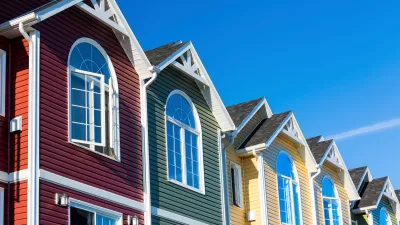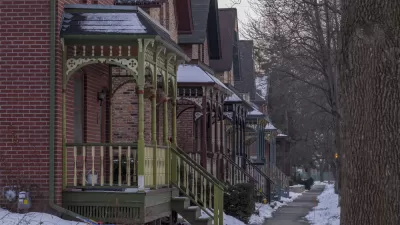In a move to combat the growing numbers of foreclosed homes and provide affordable housing, Fairfax County, Virginia, has announced plans to buy up foreclosed properties to augment the county's supply of affordable homes.
"County leaders said the program, through which Fairfax will purchase some properties outright and help families buy others through subsidized loans, takes advantage of a unique moment when thousands of homes are entering foreclosure and available for purchase at below-market prices. The program will expand the county's stock of affordable housing and help stabilize areas where clusters of abandoned, unkempt properties in foreclosure threaten the value and vitality of surrounding neighborhoods, county officials said."
"Although other communities are addressing the housing crisis primarily through counseling and such financial help as utility payment assistance, Fairfax is plunging deeper into the issue by agreeing to spend more than $10 million in tax revenue toward the purchase of as many as 200 foreclosed houses. The county will purchase 10 houses outright; the rest will be purchased by qualifying buyers with the help of government-backed, low-interest loans. Buyers will be eligible for subsidized mortgages as well as low-interest second trusts up to $70,000. Most of the assistance will be directed to first-time buyers earning as much as $75,600, or 80 percent of the area's median income. Most purchases will be limited to $385,000 and exclude condominiums. All of the money in the first year would come from existing housing programs."
FULL STORY: Fairfax Will Buy Foreclosed Properties

Alabama: Trump Terminates Settlements for Black Communities Harmed By Raw Sewage
Trump deemed the landmark civil rights agreement “illegal DEI and environmental justice policy.”

Planetizen Federal Action Tracker
A weekly monitor of how Trump’s orders and actions are impacting planners and planning in America.

The 120 Year Old Tiny Home Villages That Sheltered San Francisco’s Earthquake Refugees
More than a century ago, San Francisco mobilized to house thousands of residents displaced by the 1906 earthquake. Could their strategy offer a model for the present?

Indy Neighborhood Group Builds Temporary Multi-Use Path
Community members, aided in part by funding from the city, repurposed a vehicle lane to create a protected bike and pedestrian path for the summer season.

Congestion Pricing Drops Holland Tunnel Delays by 65 Percent
New York City’s contentious tolling program has yielded improved traffic and roughly $100 million in revenue for the MTA.

In Both Crashes and Crime, Public Transportation is Far Safer than Driving
Contrary to popular assumptions, public transportation has far lower crash and crime rates than automobile travel. For safer communities, improve and encourage transit travel.
Urban Design for Planners 1: Software Tools
This six-course series explores essential urban design concepts using open source software and equips planners with the tools they need to participate fully in the urban design process.
Planning for Universal Design
Learn the tools for implementing Universal Design in planning regulations.
Clanton & Associates, Inc.
Jessamine County Fiscal Court
Institute for Housing and Urban Development Studies (IHS)
City of Grandview
Harvard GSD Executive Education
Toledo-Lucas County Plan Commissions
Salt Lake City
NYU Wagner Graduate School of Public Service





























